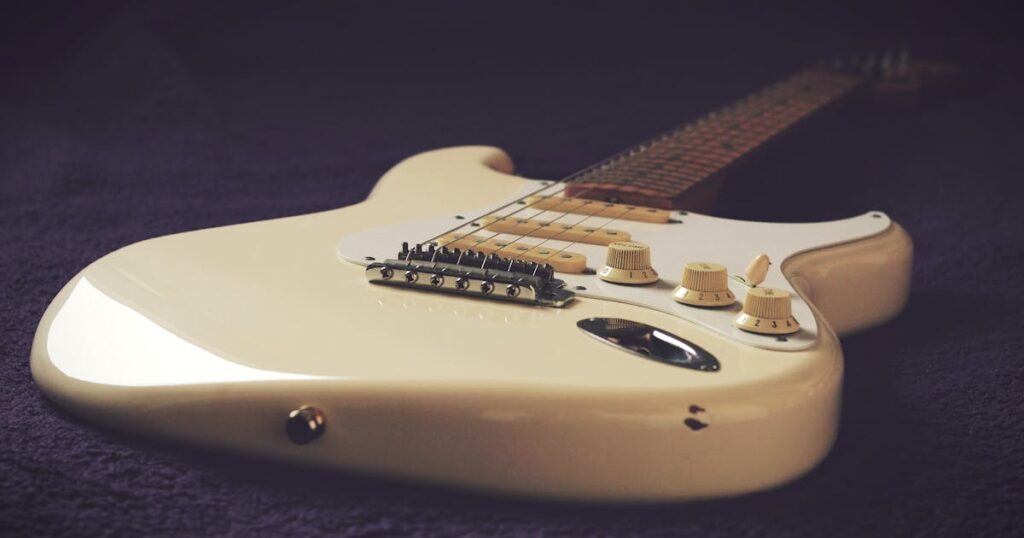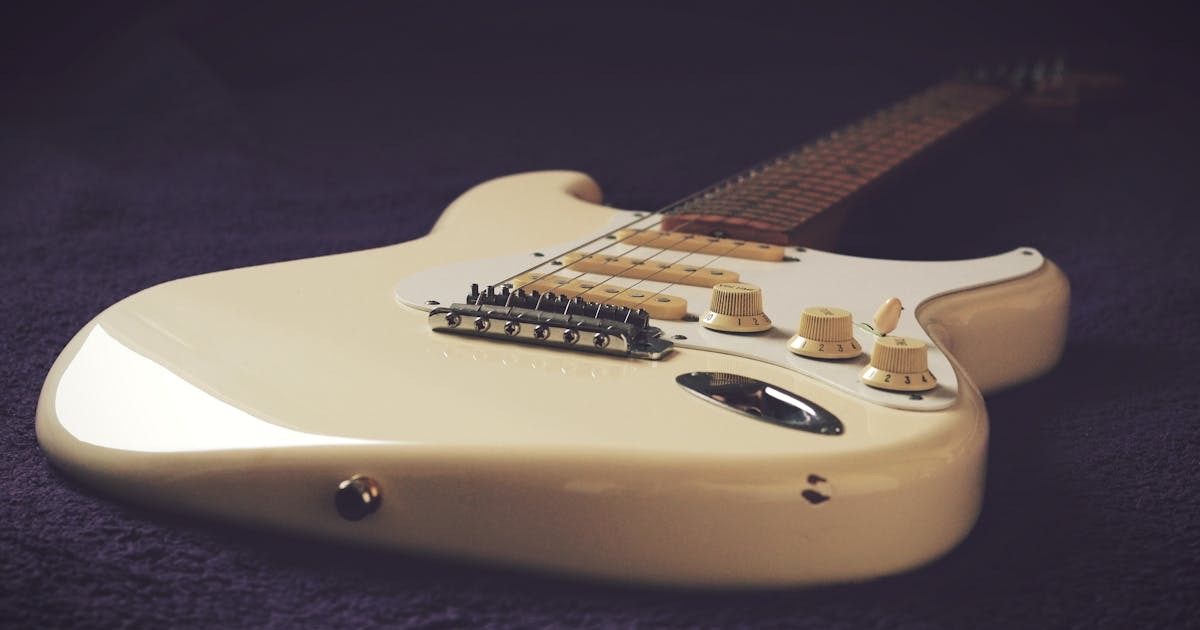Key takeaway: The article explores various electric guitar styles, including iconic body shapes and unique designs. It highlights the importance of body construction, pickup types, and hardware, providing comprehensive knowledge for enthusiasts and those new to the world of electric guitars.
Electric guitars have been a staple in the music industry for decades, with their unique sound and versatile capabilities making them a favourite among musicians. But did you know that there are different kinds of electric guitars? From iconic body styles to unique constructions and pickups, each type offers its own distinctive features and sounds.
In this article, we will dive into the world of electric guitars and explore the various types available. Whether you’re a local resident looking to learn more about your community’s cultural heritage or a lifestyle advocate seeking to expand your musical knowledge, this article is for you. Join us as we take a closer look at the different kinds of electric guitars and their characteristics.
Iconic Guitar Body Styles
When it comes to electric guitars, the body style is one of the most distinguishing features. From the classic Fender Stratocaster to the sleek Gibson Les Paul, each shape has its own unique characteristics and history.
One of the most popular guitar body styles is the Stratocaster, known for its double-cutaway design and three single-coil pickups. This iconic body shape was first introduced by Fender in 1954 and has been a staple in rock music ever since. The offset waist makes it comfortable to play while standing or sitting, making it a favourite among performing musicians.
Another notable guitar body style is the Les Paul, with its single-cutaway body and two humbucking pickups. This design was introduced by Gibson in 1952 and has been used by legendary guitarists such as Jimmy Page and Slash. The Les Paul is known for its warm, rich tone and sustain, making it a popular choice for blues, rock, and metal genres.
Other Iconic and Weird Shaped Guitars
While the Stratocaster and Les Paul are undoubtedly well-known, there are other iconic guitar body styles that have stood the test of time. The Telecaster, also from Fender, features a single cutaway design with two single-coil pickups and a distinctive twangy sound.
It was first introduced in 1950 and is often associated with country music, but has also been used in other genres such as rock and jazz. For those looking for something more unique, there are also various weird shaped guitars available. The Flying V, introduced by Gibson in 1958, features a distinctive V-shaped body and two humbucking pickups.
It was initially marketed towards hard rock musicians but has also been embraced by heavy metal artists. Another notable mention is the Explorer, also from Gibson, which features an angular body design and dual humbucking pickups. This guitar gained popularity in the 1970s with its use in heavy metal music.
Guitar Body Types and Construction
Aside from their shape, electric guitars also come in different body types and constructions, each with its own distinctive features. The most common type is the solid-body guitar, which has a solid piece of wood as its body and provides a bright, clear sound.
The semi-hollow body guitar, on the other hand, has a hollowed-out centre block in the body, allowing for more resonance and a warmer tone. For those looking for an even warmer and fuller sound, there are also hollow-body electric guitars available.
These have completely hollow bodies without any centre block, providing a rich tone that is often associated with jazz music. Another construction option is the chambered body guitar, which has multiple small chambers within the body for added resonance and a unique sound.
Pickup Types and Configurations
The type of pickups on an electric guitar also greatly affects its sound. Single-coil pickups, as the name suggests, have a single coil of wire that picks up vibrations from the strings. They provide a bright, crisp tone and are commonly used in genres such as blues, rock, and country music.
On the other hand, humbucking pickups consist of two coils wound in opposite directions to cancel out any unwanted noise or “hum.” This results in a warmer, fuller sound compared to single-coil pickups. Some electric guitars have a combination of both types for added versatility.
The configuration of these pickups also plays a significant role in the guitar’s sound. The most common setup is the three-pickup configuration, with a single-coil pickup in the neck position, a humbucker in the bridge position, and another single-coil in the middle position. Other options include two-humbucker configurations or a single humbucker setup.
Hardware and Electronics
In addition to body styles and pickups, hardware and electronics are also essential components of an electric guitar. The bridge is where the strings are anchored on the body and play a crucial role in tuning stability and tone.

There are various types of bridges available, such as fixed bridges, tremolo systems, and Bigsby vibrato systems. The electronic controls on an electric guitar, such as tone and volume knobs, also contribute to its sound.
Some guitars have simple controls with just a few knobs, while others have more complex setups with switches and multiple knobs for added tonal options.
Frequently Asked Questions (FAQ)
Q: What is the difference between single-coil and humbucking pickups?
A: Single-coil pickups use a single coil of wire to capture sound vibrations, resulting in a bright and crisp tone. In contrast, humbucking pickups consist of two coils wound in opposite directions, which helps to cancel out noise and produce a warmer, fuller sound. This makes humbuckers particularly desirable in genres requiring fewer unwanted sounds, such as rock and metal.
Q: Can I use different guitars for different music genres?
A: Yes, the type of guitar can significantly influence the tonal quality and overall sound in various music genres. For instance, the Fender Stratocaster is often favoured in rock and blues for its versatility and brighter sound, while the Gibson Les Paul is popular in rock and metal for its warm tone and sustain. Choosing a guitar that matches your chosen genre can enhance your playing experience.
Q: What body style is best for beginners?
A: While personal preference plays a crucial role, many beginners find solid-body guitars like the Fender Stratocaster or Telecaster easier to handle. These guitars typically offer a comfortable weight and straightforward playability, making them ideal for those starting their musical journey.
Q: How does the body construction affect sound?
A: The body construction significantly impacts the sound of an electric guitar. Solid-body guitars, which have no hollow spaces, provide a clear, bright tone with minimal feedback. Semi-hollow and hollow-body constructions offer more resonance and warmth, often favoured in jazz and blues. Understanding these differences can help you select a guitar that aligns with your desired sound.
Q: What should I look for in guitar hardware?
A: Key aspects to consider when evaluating guitar hardware include the type of bridge, tuning stability, and quality of the electronics. A good bridge contributes to maintaining tuning and playability, while high-quality electronic components can enhance your tonal options and overall sound clarity.
Conclusion: different kinds of electric guitars
There are many different kinds of electric guitars out there, each with its own unique characteristics and history. From iconic body styles to quirky constructions and pickups, the possibilities are endless when it comes to finding the perfect electric guitar for your musical needs.
So whether you’re a seasoned musician or just starting on your musical journey, consider exploring the various types of electric guitars available and discover which one suits your style best.
